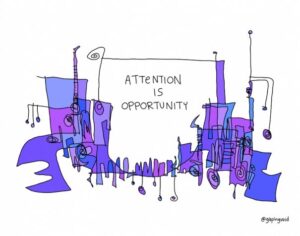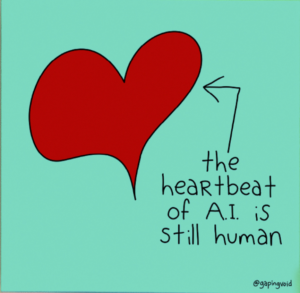Smarter Referrals: Reflections from my talk at the Canadian Association of Radiologists Conference
 Today, healthcare faces a crucial challenge: leveraging clinical decision support (CDS) tools to make smarter, more efficient healthcare referrals. Speaking at the Canadian Association of Radiologists’ (CAR) Conference on Digitizing Healthcare Referrals, I shared thoughts on integrating CDS into healthcare systems and how we can make these tools more practical for clinicians and valuable for patients. CDS tools hold promise to enhance the decision-making process, but we must address certain barriers to make them more impactful, including interoperability, usability, and data flow.
Today, healthcare faces a crucial challenge: leveraging clinical decision support (CDS) tools to make smarter, more efficient healthcare referrals. Speaking at the Canadian Association of Radiologists’ (CAR) Conference on Digitizing Healthcare Referrals, I shared thoughts on integrating CDS into healthcare systems and how we can make these tools more practical for clinicians and valuable for patients. CDS tools hold promise to enhance the decision-making process, but we must address certain barriers to make them more impactful, including interoperability, usability, and data flow.
The Promise of CDS in Healthcare Referrals
CDS tools are often positioned as gatekeepers, intended to streamline or limit access to certain tests. While this restriction can help with resource allocation, it doesn’t fully address the needs of clinicians and patients. Instead, CDS tools should function as collaborative aids that empower physicians to make smarter choices based on up-to-date guidelines, patient history, and clinical context.
For example, as a family doctor, I can’t possibly stay updated on every new recommendation for diagnostic testing across all specialties. Yet, when I see a patient in my office, I need access to the best, most recent clinical information. CDS tools have the potential to deliver this knowledge in real time, enhancing my decision-making without slowing down my practice. By supporting physicians in their roles as decision-makers, CDS can serve an educational function, allowing clinicians to become more knowledgeable with each use. In an ideal scenario, CDS tools could help me order the right tests without requiring me to go through endless checkboxes or prompts—reducing “alert fatigue” and focusing more on the flow of care.
Current CDS Limitations in Practice
In our current electronic medical record (EMR) and hospital information systems (HIS), however, CDS tools often fall short of this ideal. Many of the existing systems provide limited decision-making support, relying on simple dropdown menus, decision trees or Boolean searches in the background that offer basic alerts rather than sophisticated insights. This approach tends to create “alert fatigue” among clinicians, from stop signs and red lights, as the repetitive notifications hinder rather than help our daily work. Instead, these tools should provide “green lights,” proactively suggesting alternative tests or clinical paths based on both the patient’s unique situation and broader medical guidelines.
The problem is compounded by a lack of interoperability among the various EMR systems in use in physicians’ offices across Canada. With three major EMR providers dominating the market, each has proprietary interests, making it difficult to access or share data across systems. For CDS to truly be useful, it must seamlessly integrate with multiple EMRs, allowing data to flow freely and be accessible at the point of care. Current systems often block this level of integration, making it harder for physicians to access and act on patient data promptly. This interoperability challenge limits the reach of CDS tools and hampers their ability to support clinicians effectively.
Data Accessibility and the Role of Legislation
Recent legislative steps by Health Canada to combat data blocking show promise for the future of CDS integration. Legislation could help ensure that patient data is accessible across platforms, allowing for a more cohesive flow of information between different health systems. When patient data can move smoothly, CDS tools can be designed to provide context-sensitive insights, drawing on comprehensive patient information to guide decisions.

The Role of Digital Twins
A promising concept for addressing these issues is the “digital twin” model. This approach duplicates real patient data into a safe, normalized dataset, enabling real-time analytics without compromising original records. Using a digital twin, CDS tools could provide deeper insights by analyzing broader population data while keeping each patient’s information secure. It’s an exciting direction that could offer a powerful solution for effective data sharing and decision support and is now being scaled and spread in regions like Fraser Health in BC.
Supporting Radiologists and Clinicians with AI and CDS Tools
At the Canadian Association of Radiologists, the focus is understandably on the specific ways CDS can benefit radiology, both in assisting radiologists and supporting other clinicians in making smarter referrals. AI applications in radiology, for example, are already helping to identify subtle patterns and details that human eyes might miss. For radiologists, CDS tools can serve as an additional “pair of eyes,” especially as AI becomes increasingly sophisticated in image interpretation.
For family doctors and general practitioners, CDS tools could provide invaluable support in choosing the most appropriate tests. Rather than just denying a request for an MRI because a patient does not meet some unknown criterion, an advanced CDS system might suggest a more relevant test, such as an X-ray for boney knee issues. By integrating such tools into routine practice, we could reduce unnecessary wait times, ensure more targeted care, and offer clinicians the support they need to make better decisions.
Moving Towards Practical Implementation: The Role of Physician Associations and Policy Makers
The Canadian Association of Radiologists (CAR) and other specialty groups (including Family Medicine) can play a pivotal role by advocating for national standards on CDS and supporting the implementation of interoperable systems. Setting these standards would help ensure that clinical guidelines, test appropriateness, and the functionality of CDS tools are consistent across Canada. Working with policymakers, these groups could help advocate for “proof of concept” implementations, encouraging the real-world application of CDS tools to ensure they are relevant and continuously updated.
Training and support for clinicians are also essential. Health informatics organizations and associations like CAR could offer educational resources to help clinicians understand and navigate CDS tools. When physicians know how to use these tools effectively, they are more likely to incorporate them into their daily workflow, reducing the risk of alert fatigue and enhancing the quality of patient care.
 Looking Forward: The Role of Collaboration and Trust
Looking Forward: The Role of Collaboration and Trust
A critical component in the success of CDS tools lies in fostering trust among stakeholders. This includes trust between physicians and patients, trust among clinicians, and trust in the systems we rely on for our data and tools. Effective CDS tools depend on collaboration between healthcare providers, policymakers, and technology vendors, but partnerships of this kind require sustained effort and open communication.
By investing in CDS tools that genuinely support clinical decision-making, we can create a healthcare system that is smarter, more efficient, and ultimately more supportive of both physicians and patients. This will take a concerted effort on the part of policymakers, industry leaders, and healthcare providers alike. However, the potential benefits—increased diagnostic accuracy, more efficient use of resources, and enhanced patient experiences—make this work worth the challenge.
As we look forward, healthcare organizations and dedicated clinician interest groups have an opportunity to shape the future of CDS in Canada. Through continued advocacy, setting standards, and fostering collaboration, we can ensure that CDS tools become a valuable resource that clinicians can rely on, improving the healthcare experience for all.


One Reply to “Smarter Referrals: Reflections from my talk at the Canadian Association of Radiologists Conference”
I like the traffic light analogy. It does a great job articulating that CDS tools should make suggestions, not demands.
Have you heard of CDS Hooks (An HL7 technology)?
Are you following the TEFCA developments in the U.S? Any thoughts about copying that model here in Canada?